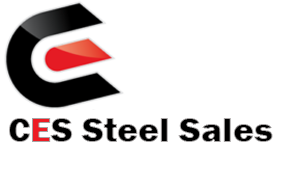What are five basic steel cutting processes?
Steel cutting processes are used to cut steel using a variety of methods. There are many different types of steel, so there are many different types of steel cutting processes. Some common methods are oxy-fuel gas cutting, plasma cutting, water jet cutting, laser cutting, and abrasive jet cutting.
Each type of steel has different properties that must be considered when choosing the most appropriate steel cutting process. Steel cutting processes are used to cut steel using a variety of methods. There are many different types of steel, so there are many different types of steel cutting processes. Some common methods are oxy-fuel gas cutting, plasma cutting, water jet cutting, laser cutting, and abrasive jet cutting.
Each type of steel has different properties that must be considered when choosing the most appropriate steel cutting process.
Five basic steel cutting processes
There are five main types of steel cutting processes: plasma cutting, oxy-fuel cutting, laser cutting, water jet cutting, and band sawing. Plasma cutting is the most popular type of steel cutting process. It is a thermal cutting process that uses a plasma torch to cut through the metal. Oxy-fuel cutting is a thermal cutting process that uses oxygen and fuel gas to cut through the metal. Laser Cutting is a non-thermal cutting process that uses a laser beam to cut through the metal. Water Jet Cutting is a non-thermal Cutting process that uses high-pressure water to cut through the metal. Band Sawing is a mechanical Cutting process that uses a band saw blade to cut through the metal.
Steel cutting methods:
Steel cutting methods are very important in the manufacturing process. There are various types of steel, and each type needs to be cut differently. The most common way to cut steel is with a laser, which can be used to cut through a variety of different types of steel. There are also other methods that can be used to cut steel, such as water jets and plasma torches. Each method has its own benefits and drawbacks, so it’s important to choose the right method for the job.
Plasma cutting:
Plasma cutting is a process that uses a plasma torch to cut through steel and other materials. The plasma cutter creates an intensely hot plasma beam, which melts the material and blows the molten metal away from the cut. Plasma cutting is a versatile process that can be used for a variety of applications, including fabricating parts, repairing equipment, and creating sculptures.
Oxy-fuel cutting:
Oxy-fuel cutting is a process that uses fuel and oxygen to cut steel. The fuel and oxygen are mixed in the right proportions and then forced out of the nozzle of the torch at high pressure. This mixture produces a flame that is hotter than a propane or acetylene flame, so it can easily cut through steel.
Laser cutting:
Laser cutting is a technology that uses a laser to cut materials, usual metals like steel, aluminium, brass, and copper. The laser beam is directed at the material to be cut and the energy of the beam vaporizes the material. The vaporized material is then ejected from the cut and can be collected for recycling. Laser cutting is used for a variety of applications such as fabrication, manufacturing, and engineering.
Water jet cutting:
Water jet cutting is the process of using a high-pressure stream of water to cut through steel. The water is forced out of a nozzle at speeds up to Mach 5. This allows for precise and clean cuts with very little heat input, meaning that the material is not damaged by the process. Water jet cutting is especially useful for cutting steel, as it produces little burring and leaves a smooth edge.
Band sawing:
Band sawing is a type of cutting that uses a band saw blade to cut through the material. The blade is a continuous band of metal with teeth along one edge. The blade is stretched between two wheels and moves through the material to be cut. Band sawing is often used to cut steel because it produces a very smooth finish.
In conclusion, there are five main steel cutting processes: oxygen fuel cutting, plasma arc cutting, water jet cutting, laser beam cutting, and sawing. Each process has its own unique benefits and drawbacks, so it is important to choose the right one for the job at hand. For more information on these processes and others, please visit our website or contact us today.
